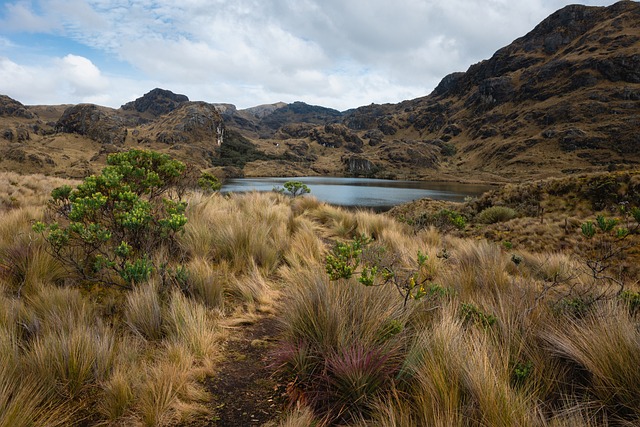Nestled in the Pacific Ocean, approximately 600 miles off the coast of Ecuador, lies a group of volcanic islands known for their remarkable biodiversity and unique ecosystems—the Galápagos Islands. Declared a UNESCO World Heritage site in 1978, these islands are a bucket-list destination for nature lovers, wildlife enthusiasts, and adventure seekers. With their breathtaking landscapes, exotic wildlife, and rich history, the Galápagos Islands offer an unforgettable experience for every traveler. This comprehensive guide aims to equip you with essential information and tips to make the most of your visit to this extraordinary archipelago.
An Overview of the Galápagos Islands
The Galápagos archipelago consists of 13 major islands, 6 smaller islands, and numerous islets and rocks spread over an area of approximately 50,000 square kilometers. The major islands include Isabela, Santa Cruz, Santiago, Española, and Fernandina, among others. The capital, Puerto Baquerizo Moreno, is located on San Cristóbal Island. Formed by volcanic activity, the islands emerged from the ocean millions of years ago, and their isolated geographical position has led to the evolution of many unique species.

One of the most notable characteristics of the Galápagos Islands is their diverse climate. The highs and lows of temperature and precipitation vary by island and time of year. Visitors can experience either the warm and wet season (December to May) or the cooler and drier season (June to November), each offering distinct opportunities for exploration and wildlife observation.
The Rich Wildlife of the Galápagos
The Galápagos Islands are famously known as the “Living Laboratory of Evolution.” This is a testament to the archipelago’s role in Charles Darwin’s theory of natural selection. The islands are home to an array of unique and endemic species, many of which cannot be found anywhere else on Earth.
Iconic Species to Observe
- Giant Tortoises: The Galápagos giant tortoise is one of the largest tortoise species in the world and a symbol of the islands. Several conservation programs are in place to protect these magnificent creatures.
- Marine Iguanas: The only iguana species that can swim, marine iguanas are remarkable for their ability to forage in cold ocean waters and bask on the rocks.
- Blue-footed Boobies: Famous for their vibrant blue feet, these birds are a delightful sight for birdwatchers. Their distinctive courtship dance is a popular attraction for visitors.
- Darwin’s Finches: A group of finch species that played a crucial role in Darwin’s studies of evolution. Each species has adapted to its environment in unique ways, making them fascinating subjects for birdwatching.
- Sea Lions: Spirited and playful, these marine mammals can often be spotted lounging on beaches or frolicking in the ocean.
The Marine Ecosystem
The waters surrounding the Galápagos Islands are equally rich in biodiversity. With crystal-clear visibility and an abundance of marine life, activities such as snorkeling and diving are a must. You might encounter colorful fish, sea turtles, rays, and even sharks while exploring the vibrant underwater world.
Best Ways to Explore the Galápagos
Cruise vs. Land-Based Tours
When planning a trip to the Galápagos, tourists have the option of choosing between cruise tours and land-based tours. Each offers a unique way to explore the islands, and the best choice often depends on personal preferences.
- Cruise Tours: These guided tours take you from island to island on a boat, providing opportunities to visit multiple locations in a short time. Cruises often include meals, accommodations, and guided excursions, making it convenient for travelers who want a comprehensive experience without the hassle of individual logistics.
- Land-Based Tours: If you prefer a more leisurely pace, land-based tours allow you to explore one or two islands in depth. This option provides flexibility to engage with local culture, dine at local restaurants, and stay at various accommodations. Santa Cruz is often a popular hub for land-based tours, offering numerous excursions to neighboring islands.
Key Attractions on the Islands
Each island in the Galápagos boasts its own unique attractions, making it essential to prioritize your visitation based on interests. Here are some highlights:
Santa Cruz Island
Home to the Charles Darwin Research Station, Santa Cruz Island is known for its conservation efforts and giant tortoise breeding program. Visitors can learn about ecology and participate in various educational programs. The island also features stunning beaches, hiking trails, and the scenic lava tubes—natural formations created by volcanic activity.
Isabela Island
The largest island in the archipelago, Isabela, is renowned for its diverse landscapes, including volcanoes, wetlands, and pristine beaches. A must-visit site is the Sierra Negra Volcano, offering breathtaking views from its summit. Additionally, the island’s Tintoreras Islet is a great spot to observe marine life up close and personal.
Española Island
Española is a birdwatcher’s paradise, offering opportunities to see the infamous waved albatross, which breeds exclusively on the island. The dramatic cliffs and spectacular geological formations in Gardner Bay are worth a hike, while the pristine beaches invite relaxation.
Genovesa Island
Known as “Bird Island,” Genovesa is a hotspot for bird-watching enthusiasts. Travelers can witness the spectacular nesting sites of various species, including red-footed boobies, Nazca boobies, and storm petrels.
Practical Tips for Travelers
Travel Documentation and Entry Requirements
Visitors to the Galápagos Islands must present a valid passport and pay a Galápagos National Park entrance fee upon arrival. It’s advisable to book your trip in advance and research visa requirements based on your nationality.
Packing Essentials
Given the varied weather conditions and activities available, packing wisely is essential. Here’s a checklist of recommendations:
- Lightweight, breathable clothing for warm days
- Warm layers for cooler evenings
- Swimwear and snorkeling gear (some tours provide gear)
- Hiking shoes and sandals
- Binoculars and a camera for wildlife observation
- Sunscreen, hats, and insect repellent

Respecting Wildlife and Environment
The conservation of the Galápagos Islands is paramount to preserving their unique ecosystems. Visitors are encouraged to follow the guidelines established by the Galápagos National Park, including staying on marked trails, not feeding animals, and avoiding touching wildlife.
The Galápagos Islands offer a rare opportunity to immerse yourself in a world of untouched beauty and extraordinary wildlife. Whether you’re exploring the islands by cruise or enjoying a land-based tour, you’ll discover the awe-inspiring landscapes and distinct ecosystems that make this archipelago a true marvel of nature. Prepare to create unforgettable memories as you venture into the heart of one of the most unique environments on our planet. Pack your bags, grab your sense of adventure, and get ready to uncover the enchanting wonders of the Galápagos Islands, Ecuador.





